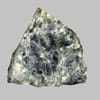Definition
Dunite is a green to brownish coarse-grained igneous rock mainly consisting of olivine
Phyllite is a fine-grained metamorphic rock with a well-developed laminar structure, and is intermediate between slate and schist rocks
Origin
New Zealand
Unknown
Discoverer
Ferdinand von Hochstetter
Unknown
Etymology
From the name of Dun Mountain, New Zealand, + -ite1
From Greek phullon leaf + -ite1
Class
Igneous Rocks
Metamorphic Rocks
Sub-Class
Durable Rock, Medium Hardness Rock
Durable Rock, Soft Rock
Group
Plutonic
Not Applicable
Other Categories
Coarse Grained Rock, Opaque Rock
Coarse Grained Rock, Fine Grained Rock, Medium Grained Rock, Opaque Rock
Texture
Phaneritic
Phyllitic Sheen, Slaty
Color
Dark Greenish - Grey
Black to Grey, Light Greenish Grey
Durability
Durable
Durable
Appearance
Rough and Shiny
Crinkled or Wavy
Interior Uses
Decorative Aggregates, Interior Decoration
Decorative Aggregates, Floor Tiles, Homes, Interior Decoration
Exterior Uses
As Building Stone, As Facing Stone, Garden Decoration, Paving Stone
As Building Stone, As Facing Stone, Garden Decoration
Other Architectural Uses
Curbing
Curbing
Construction Industry
As Dimension Stone, Cement Manufacture, Construction Aggregate, for Road Aggregate, Making natural cement, Raw material for the manufacture of mortar
As Dimension Stone, Building houses or walls, Cement Manufacture, Construction Aggregate, for Road Aggregate, Raw material for the manufacture of mortar, Roadstone
Medical Industry
Not Yet Used
Not Yet Used
Antiquity Uses
Artifacts, Monuments, Sculpture, Small Figurines
Artifacts, Sculpture
Commercial Uses
Creating Artwork, Gemstone, Jewelry, Source of Chromite, Platinum, Nickel and Garnet, Source of Diamonds
Cemetery Markers, Commemorative Tablets, Creating Artwork, Writing Slates
Types
Not Available
Not Available
Features
Constitutes upper part of the Earth's mantle, Generally rough to touch, Host rock for Diamond, Is one of the oldest rock
Easily splits into thin plates, Is one of the oldest rock, Surfaces are often shiny
Archaeological Significance
Monuments
Used
Not Yet Used
Famous Monuments
Data Not Available
Not Applicable
Famous Sculptures
Data Not Available
Data Not Available
Formation
Dunite is a plutonic ultramafic igneous rock consisting almost m olivine. It can be formed in two ways.
Phyllite is a metamorphic rock which is formed by regional metamorphism of argillaceous sediments since their cleavage arose due to deviatoric stress.
Mineral Content
Amphibole, Chromite, Garnet, Magnesium, Olivine, Phlogopite, Plagioclase, Pyroxene
Albite, Alusite, Amphibole, Apatite, Biotite, Chlorite, Epidote, Feldspar, Garnet, Graphite, Hornblade, Kyanite, Micas, Muscovite or Illite, Porphyroblasts, Quartz, Sillimanite, Staurolite, Talc, Zircon
Compound Content
Ca, CaO, Fe, Potassium, Silicon Dioxide, Sodium, Titanium Dioxide
CaO, Carbon Dioxide, MgO
Types of Metamorphism
Burial Metamorphism, Cataclastic Metamorphism, Contact Metamorphism
Not Applicable
Types of Weathering
Biological Weathering, Chemical Weathering, Mechanical Weathering
Biological Weathering, Chemical Weathering, Mechanical Weathering
Types of Erosion
Coastal Erosion, Glacier Erosion, Water Erosion
Chemical Erosion, Coastal Erosion, Glacier Erosion, Water Erosion, Wind Erosion
Grain Size
Coarse Grained
Medium to Fine Coarse Grained
Fracture
Irregular
Conchoidal
Porosity
Less Porous
Highly Porous
Compressive Strength
Not Available
Cleavage
Imperfect
Crenulation and Pervasive
Specific Gravity
3-3.01
2.72-2.73
Transparency
Translucent to Opaque
Opaque
Density
2.84-2.85 g/cm3
2.18-3.3 g/cm3
Specific Heat Capacity
Not Available
Resistance
Heat Resistant, Pressure Resistant, Wear Resistant
Heat Resistant, Pressure Resistant, Water Resistant
Deposits in Eastern Continents
Asia
China, India, Indonesia, Kazakhstan, Russia, South Korea, Thailand, Turkey
Afghanistan, Bangladesh, Bhutan, China, India, Japan, Kazakhstan, Malaysia, Pakistan, Russia, Thailand, Turkey, Vietnam
Africa
Morocco, South Africa
Egypt, Ethiopia, Morocco, Nigeria, South Africa
Europe
Finland, France, Georgia, Germany, Great Britain, Italy, Kazakhstan, Netherlands, Norway, Spain, Switzerland, Venezuela
Austria, England, France, Georgia, Germany, Italy, Liechtenstein, Monaco, Norway, Slovenia, Spain, Sweden, Switzerland
Others
Not Yet Found
Not Yet Found
Deposits in Western Continents
North America
Canada, USA
Canada, Costa Rica, Cuba, Mexico, Panama, USA
South America
Argentina, Brazil, Colombia, Ecuador, Venezuela
Brazil, Colombia, Guyana
Deposits in Oceania Continent
Australia
New Zealand, Western Australia
New South Wales, New Zealand, Queensland










